
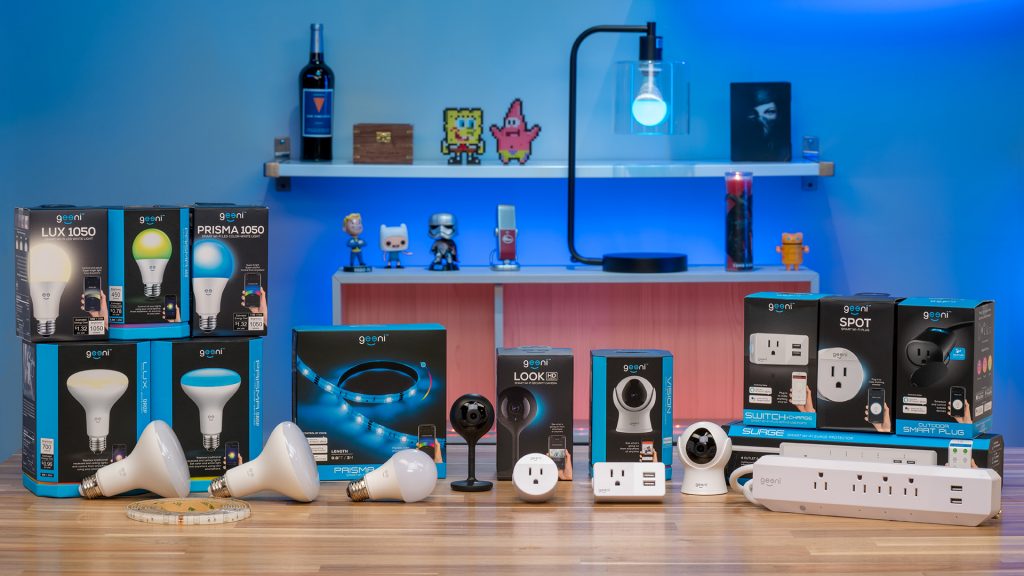
In the few short years since Smart Home tech started taking off, there have been countless companies that have risen and fallen by the fate of one product. Many of these one-trick ponies have failed to remain in the market as a result of developing an ultra-niche product, without the willingness or ability to explore neighboring device verticals. This sad fate is certainly not the case with the latest gem we’ve discovered in the world of Home Automation, Geeni with their smart lighting and security devices..
Just like your attentive magical genie can pop out of a lamp to solve all your problems, the Home Automation company Geeni appeared on the scene, with a slew of smart devices to fix (most of) your smart home needs with a verbal command. Fortunately, you don’t have to wish for more wishes with this Geeni.
Geeni isn’t alone in their diversification strategy within the Smart Home space: big players like Nest have understood the need to sow more seeds and branch out from their debut device to include various items to grow. In the case of Nest their locks, smoke sensors, alarms and doorbells all have rolled out alongside their crown jewel thermostats to grow market share.
Smart Devices Without a Hub
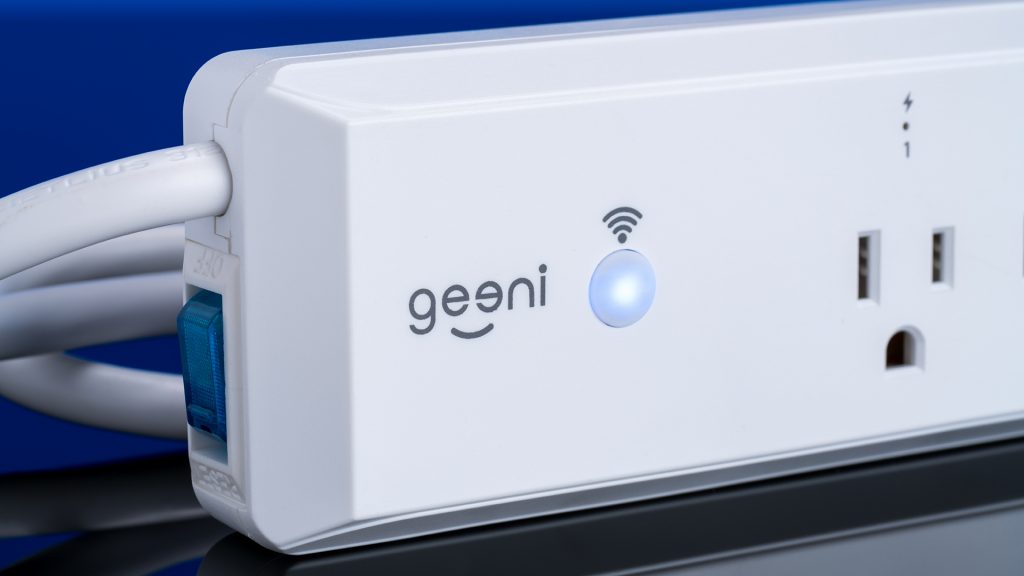
While Geeni has devices spanning the gamut from color-changing LED smart bulbs to indoor smart plugs, outdoor weatherproof Wi-Fi plugs to indoor IP cameras for some of the lowest prices on the market, one of their rally cries is the interconnectivity of the suite all without a central hub.
When the home automation world was just getting off the ground, eager companies were trying to make their own protocols, while users found themselves needing to buy standalone hubs to connect the devices.
With Wi-Fi becoming the most widely adopted method for most devices and the prevalence of Amazon Echo or Google Home variants, there is less of a need for standalone hubs unless users opt for Zigbee or Z-Wave protocols. Those who do build their Smart Homes on these protocols will always need to have a hub specific to the protocol, in addition to any voice controller they might opt for.
The beauty of Wi-Fi devices without a hub is that there isn’t another piece of gadetry to buy, and with the growing selection of devices available on Wi-Fi they can all communicate with one another easily. Many Wi-Fi devices (including the Geeni ecosystem) operate on a 2.4GHz network, while some devices actually have dual-band Wi-Fi capabilities.
Other smart LED companies like Philips Hue or Insteon require a hub to power their ecosystem, which would then act as an intermediary between those devices and a secondary hub like a voice controller, in order to have devices outside the ecosystem communicate with one another.
Wish #1: Whole-Home Smart Lighting
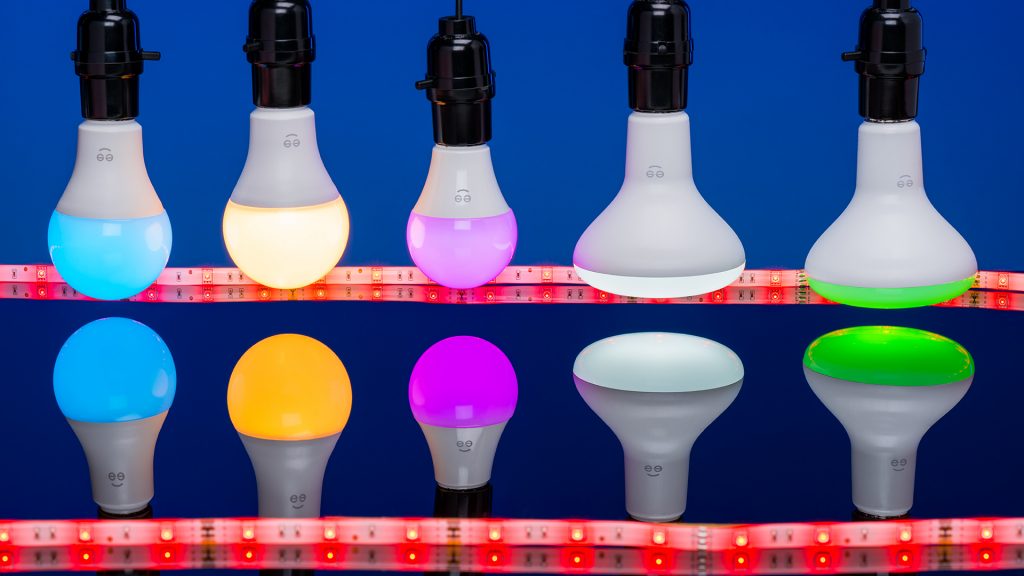
Geeni’s Wi-Fi lighting line takes the rather unique approach of having a variety of LED formats, each one tailored to be the perfect fit for each application. While most smart lighting brands will have an option for an RGB bulb or a white bulb, Geeni does this for many bulb shapes, as well as having various wattages.
When it comes to the simple step up from regular LED bulbs to smart lighting, Geeni has a few options in their LUX lineup: the LUX 800 ($20), LUX 1050 ($20), and LUX DROP ($20). The LUX 800 is an 800 Lumen A19 bulb, which replaces a traditional 60W incandescent light, the LUX 1050 is a 1050 Lumen A21 bulb, and the LUX DROP is a 700 Lumen BR30 bulb.
With all the LUX series bulbs, brightness is adjustable and on the 1050 and DROP models color temperature is also adjustable from 2700K-6500K which covers the scale from warm tungsten light to blue daylight.
To make things a little more festive, their PRISMA series is the color-changing line of bulbs, with millions of color shade variations possible from the app. Their Geeni PRISMA 450 ($16) was one of the first bulbs I screwed in from them, and this is the standard A19 format for most home light sockets. In case you haven’t picked up on their naming convention yet, the “450” in the model name is referring to the 450 Lumen output, and it actually seemed much brighter than that when I used it. This is a 40W equivalent bulb, but with the LEDs it only uses 6.5W of electricity itself.
Geeni also brought their smart BR30 light to the colorful side of the spectrum with the PRISMA DROP 65W RGB bulb ($20). This LED has a 700 Lumen output with only 8W power usage, comparable to a 65W incandescent bulb. The great part about Geeni making a bulb in this size is that it can be used for a flush-mount ceiling application or a flood light, depending on the need.
Along with the PRISMA 450 and PRISMA DROP, Geeni also has the PRISMA 1050 A21 RGB bulb ($25), which is just a touch larger in size but packs a serious step up in light output, with a jump to 1050 Lumens. This is about equivalent to a 75W bulb, with a mere 10W to power it.
While all are awesome devices and very reasonably priced under most of the competition, none of these smart lights come remotely close to my favorite of the bunch: the Geeni PRISMA Wi-Fi Strip Light ($50).
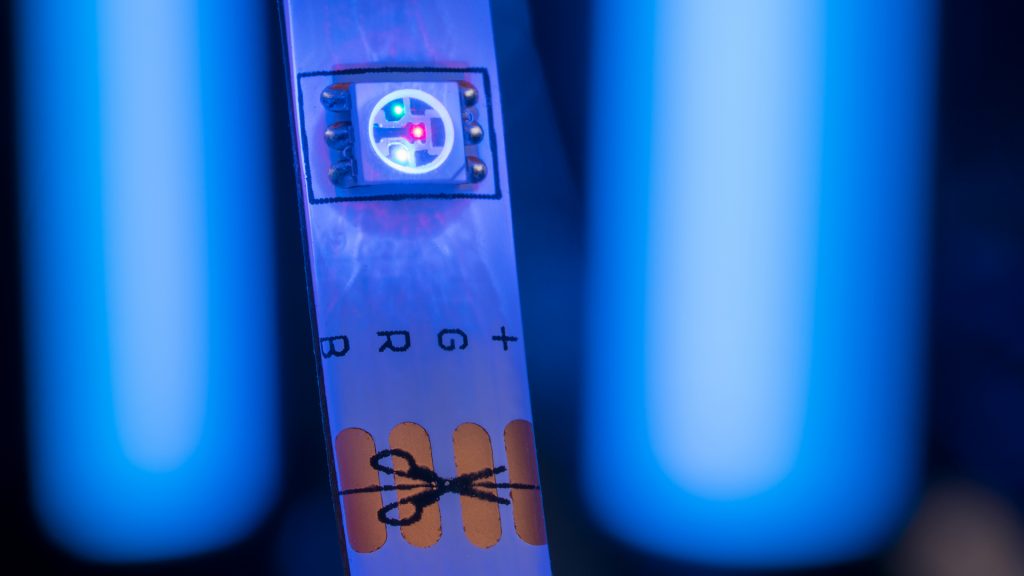
The 9.8ft flexible strip of LEDs has a rubberized coating which makes it perfect for any indoor or outdoor setting, with an IP44 water-resistant rating. This opens up the utility of the LED strip much wider, since it can be used in areas where moisture is present or more durability is important. The backing of the strip is covered in adhesive tape, making them easy to attach to any smooth surface. Additionally, they can be cut down to any size as needed.
One of the really fun features of the smart light strip is the pre-programmed lighting modes, which can be cycled through manually via a button on the cable receptacle or in the app. These modes consist of a pulsing rotation through the color spectrum, a pulsing single color, a blinking single color, or a blinking rotation through the color wheel. My personal favorite is the slow pulsing through the color gamut, which gives a soothing effect without too much distraction.
Some people might be wondering why anyone would want a bulb that can be set to any one of millions of colors, other than throwing a killer house party. Well, in a regular home setting it might not make much sense. But in a Smart Home, it can be very useful to relaying information about other areas of the house when connected to other intelligent devices.
Besides functioning as a normal white bulb with customizable color temperature most of the time, it can pair with smart cameras, motion sensors, smartphone apps or any other connected device to flash a color for a specific action using apps like Stringify. A common application for this is when a water leak sensor detects moisture all lights can be programmed to flash a specific color, say red. Maybe you want to be alerted of motion in your backyard at night with a flashing yellow light in the bedroom or living room, or when you get an email the den light glows blue; any device can trigger a customized response.
All the bulbs in the Geeni lineup are able to be controlled via app, set to schedules or even compatible with voice controllers Amazon Echo, Google Home and interestingly enough, Microsoft Cortana (more on that later).
Wish #2: Smart Cameras
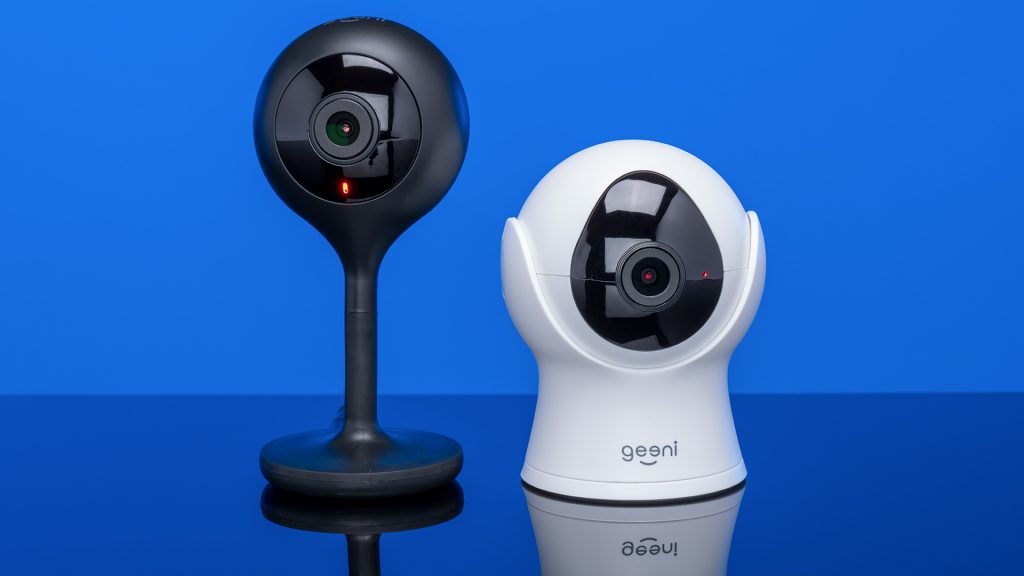
The first seeds of smart surveillance in the home came from those nanny-cams parents would hide in teddy bears to keep an eye on the babysitter and kids while they were out on a date, and while it sure made for interesting TV, it was always a bit creepy.
Fast forward to today; interior home surveillance technology and its appropriate uses have matured by leaps and bounds, with smart security cameras providing a far more seamless blend with daily life on the go.
Geeni’s foray into the Wi-Fi camera space targets simple solutions, without a whole lot of extra fluff at an affordable price. The $40 Geeni VISION is a compact camera with 720p resolution, two-way voice communication, and IR LEDs for night vision.
The VISION is a cup and ball design, with the camera mounted in a way that allows for manual adjustments for pan and tilt. It also includes a slot for a MicroSD card to store footage locally, and the roughly six-foot power cord gives plenty of leeway for placing the device throughout the home where needed.
Of course it wouldn’t be a proper smart camera without mobile motion-detection alerts, and on the VISION these can be turned on or off, as well as adjusting the sensitivity from low, medium or high. The app also allows for two-way voice communication, and while the audio quality is so-so you won’t be listening for entertainment so it gets the job done.
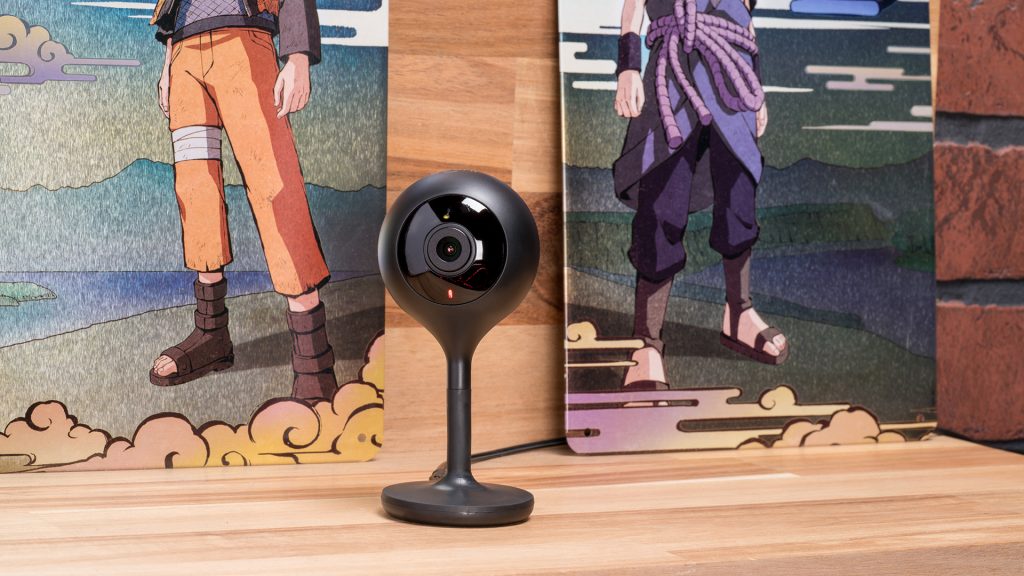
For those seeking a higher-resolution solution, Geeni’s second iteration in their smart surveillance line, the LOOK HD ($50) is a 1080p standing IP camera that reduces the profile and noticeability of the device, however the adjustments for pan and tilt would require movement of the entire unit. The video quality isn’t stellar and when viewing on the app has a slight delay, however the details are good enough to pick up from within a room in medium lighting so it does function as a basic surveillance tool.

The LOOK has a flexible stem, so it can be angled in different manners dependent on the current application, and returned back to its normal state as needed. It also comes with a 3M adhesive pad for mounting to surfaces instead of using as a standing camera, although the three-foot power cable will likely limit the possibilities for placement. I like to see a power cord with more length included for IP cameras, since the optimal location for video coverage isn’t always near an outlet.
Wish #3: Smart Plugs
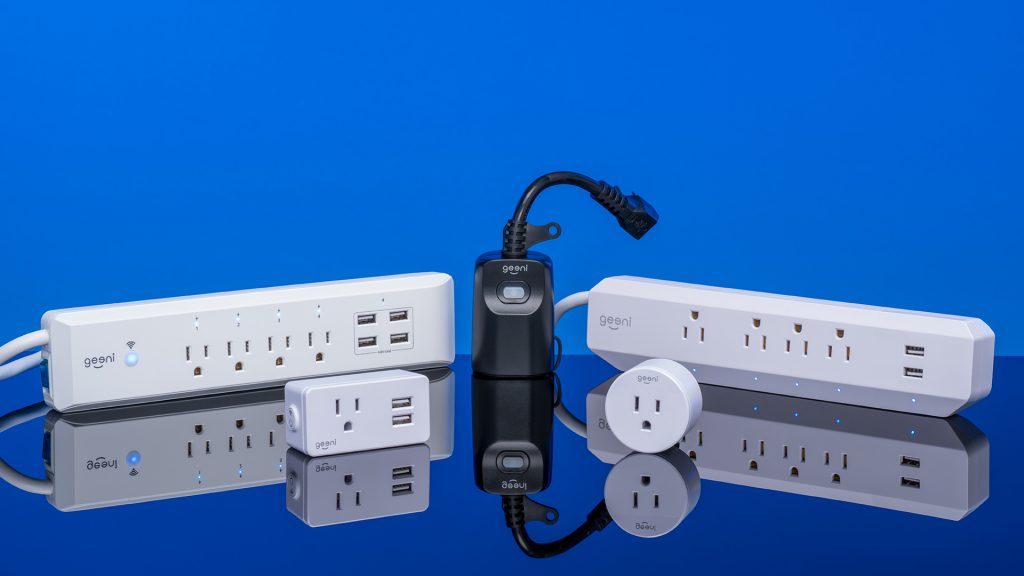
Smart plugs are so popular in the Smart Home market now, everyone has their own version of the same product without a whole lot of innovation in the space. There are a few exceptions though, and Geeni’s offerings are a case in point of the details making all the difference in a crowded market.
Despite being inexpensive, the construction quality of the Geeni plugs is sound, and the devices feel solid in-hand. That often isn’t the case with some no-name brand plugs that tend to feel hollow or rattle around when jostled a bit. Surprisingly enough, while Geeni’s most exciting devices are smart lights they have a legitimately interesting lineup of smart plugs that have some very useful features.
The most straightforward of the Geeni Wi-Fi plugs is the Geeni Spot ($20), which is very much like other smart plugs on the market: you have your schedules for on and off usage, remote access, and voice assistant capabilities.
This little hockey puck-styled plug is small enough to allow for access to the other outlet when plugged into a two-gang wall socket, which is great because some of the other Wi-Fi plugs use more than their fair share of space and restrict use to one device. When used on a power strip however, the Spot needs extra space and takes up an extra place at the table unless placed at the end.
Next up is the Geeni Switch and Charge Smart Wi-Fi Plug with 2-USB Ports ($20); which, despite being the same cost as the Spot, has a little bonus feature included. The dual USB ports on the side of the plug are extremely useful for charging portable electronics without having to unplug anything on the outlet. Many other options for including USB plugs on outlets run well over the $20 this plug normally goes for, and better yet this includes all the smart functions of the Spot.
Similar to the Spot, the Switch and Charge Wi-Fi plug takes up only its own plug space on the wall, and, despite the extra-wide design, can be added it to the end of a power strip without compromising the neighboring plug, which is cool.
When it comes to smart garden and outdoor devices, the most popular devices are Wi-Fi irrigation controllers and surveillance solutions, with some innovative smart security lighting products making their way in.
The Geeni 15 Amp Outdoor Wi-Fi Plug ($25) is an economical alternative to some other, more costly outdoor smart plugs. This device has a single outlet, which carries over all the smart control parameters from the indoor units with the distinct advantage of having a thick, durable cable and silicon outlet cap. These devices for external use are fantastic because they can operate things like holiday lighting, pool pumps, or even electric grills remotely no matter the situation, which makes things very convenient.
While the exact “weather-resistant” level is unknown, the plug states it is good for damp environments but not to be submerged or sprayed directly with water. Fair enough, that seems like good advice for most electronic devices.
One area this outdoor Wi-Fi plug does well on is the size of the unit. It isn’t a big, unwieldy hunk of plastic dangling down from a short cable, but a rather petite device that can easily be tucked away.
Keeping Your Geeni’s Power in Check
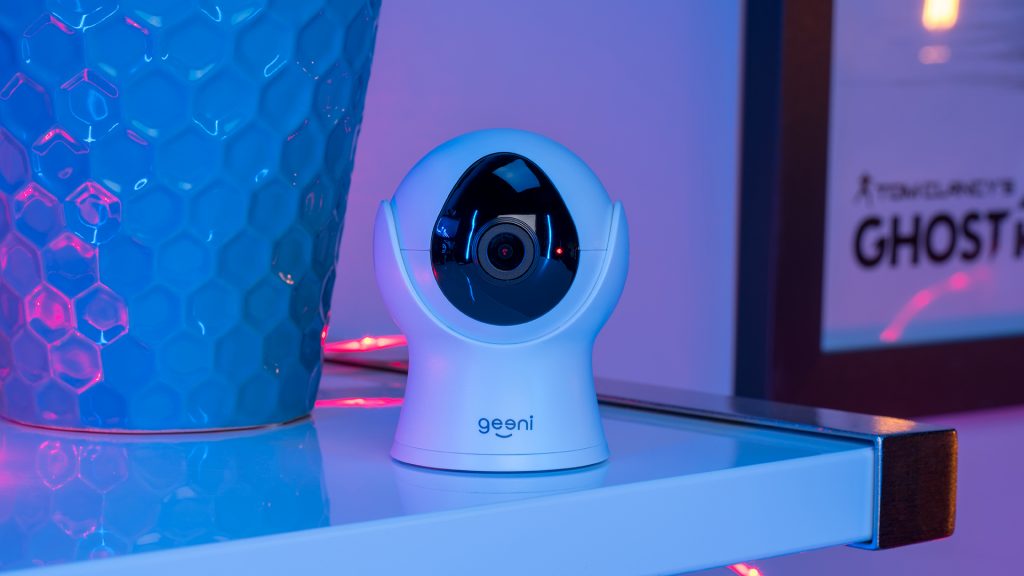
While the smart plugs are great for single-use setups or plugs that are more visible, by far the coolest from the smart energy-saving devices is the duo of the Geeni SURGE Smart Wi-Fi 4 Outlet & 4 USB Surge Protector ($30) and the Geeni Surge 4-Outlet & 2 USB Smart WiFi Surge Protector ($28).
These two devices take the expandable power capability of the power strip and throw the smart control in the mix, not only to activate the strip itself on and off but also controlling individual outlets.
This is a huge jump in utility over standard power strips, basically giving you four to six smart plugs in one, plus the security of having your electronics protected from any power surges up to 460 joules. Like with the rest of the devices Geeni offers, voice control via Amazon Alexa, Google Home, and Microsoft Cortana can operate on and off functionality, as well as controlling entire groups of devices together for specific scenes.
Additionally, the SURGE gives you four 4.8A USB ports and energy usage monitoring in the Geeni app, which can be great to determine which electronics are the most energy-hungry in your home.
If Three Wishes Weren’t Enough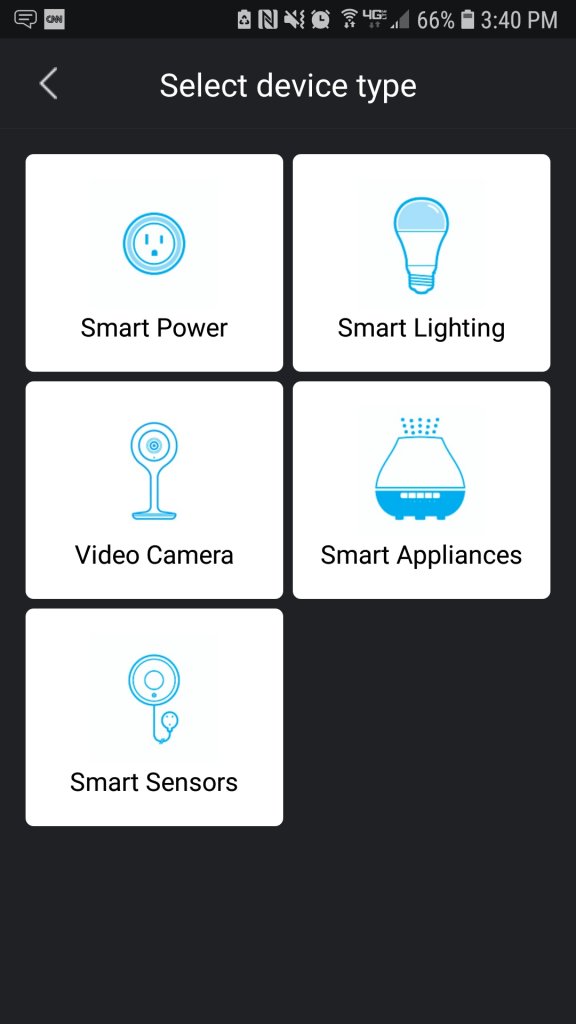
If all those weren’t enough to cover the bases of your Smart Home needs, Geeni threw in a few kickers for fun; the Geeni SOOTHE XL Wi-Fi humidifier ($70) and Geeni SPIRIT Wi-Fi essential oils diffuser ($60).
That’s right, not only can your attendant control lighting, plugs, and surveillance cameras but you can also have voice-activated aromas and perfectly humidified air wafting throughout the house. Of course, these also can be triggered via app or by schedule, so if you have scenes set up with an app like Stringify and a few compatible devices you can come home to dimmed lights, music playing, relaxing aromas all along with the right temperature to keep you comfy.
The only thing else needed for pure bliss is an automated cocktail mixer, but I have yet to see that on the market so I’ll just have to settle with making my own drinks for now.
A Smart Home with Microsoft Cortana
For any connected device to be worth its salt these days it needs to be compatible with a voice assistant like Amazon Echo or Google Home. Being that these are the two most popular assistants, the vast majority of devices have one, if not both.
An interesting direction that Geeni took to cover their bases was to not only include compatibility with Google Assistant and Amazon Alexa, but also Microsoft Cortana on every device they make.
While most of the Smart Home industry has disregarded Microsoft Cortana as a key player in the voice assistant space, Geeni’s inclusion might be a key advantage for appealing to a wider customer base.
Can Cortana Compete with Alexa & Google Assistant?
With the velocity at which the Amazon and Google voice control compatibilities are making their way into every smart device, their ecosystems have become the de facto feature to determining whether a product is successful in the connected home. So does that mean that Microsoft Cortana can take market share from the two main players?
Not in the current landscape, but for 150 million total global users across 13 countries that use it (as of June according to Microsoft) Cortana offers a way for people to control their devices on the platform they like best. Now that massive user base is not specific to voice control but the search functionality in general, so there is still a lot of ground that Microsoft needs to make up to be a consideration for the prime voice assistant spot.
However, Geeni’s incorporation with Cortana allows for smart device control on desktop computers and mobile phones alike, which is a unique element that both Google Assistant and Amazon Alexa do not have. This is quite an interesting angle, and while not nearly as handy at home, it can be useful when users are at work to check in on happenings at home
Cortana is improving, and while the voice aspect of the assistant goes unused on most of the devices “she” is installed on (700 million), Microsoft already has a foot in the door to a huge audience.
If Microsoft can increase awareness & adoption of the assistant, while partnering with more connected brands like Geeni to have compatibility built-in, they just may have a fighting chance at becoming a player in the smart voice controller space.
Their placement on so many PCs makes them a shoe-in for developing but with the unbroken progress of Google & Amazon releasing several iterations of speakers (also Apple’s HomePod now jumping into the mix for what it’s worth) and moving on to smart assistants with screens, compounding the lackluster adoption of the Cortana-powered Harman Kardon Invoke smart speaker puts Microsoft far behind the eight ball.
The Magic of Geeni
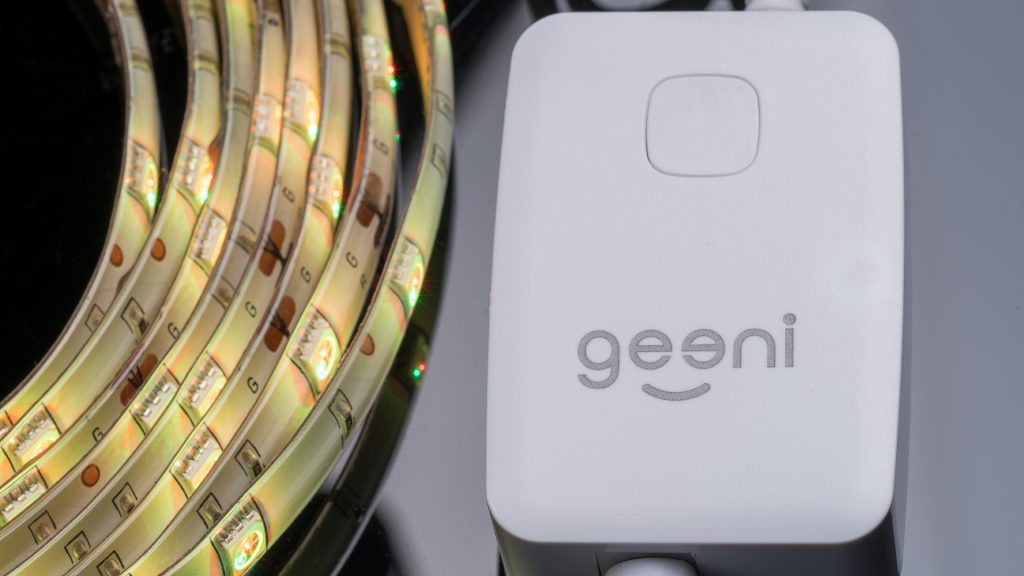
With all the burgeoning Smart Home companies competing in the crowded space, there’s bound to be a ton of “me too” companies in the bunch that fall flat on providing an innovative solution. For those just getting into the connected home space, it can be sometimes tricky to separate the wheat from the chaff, but newcomers should be wary of shopping by price over function. Often times some of the random brands that are here today may be gone tomorrow, leaving users with unsupported devices.
This isn’t a concern Geeni faces, as they are one of the few brands that are smack dab in the middle of the Venn diagram between products that deliver unique value and an actual great value. With the solid foundation of unique products they offer and the diversity of their smart devices, Geeni is one of the companies that adds to the magic to building a Smart Home.
Featured in this article:
“Note, all prices and products are accurate at the time of article publication, although some may have changed or are no longer available.”
